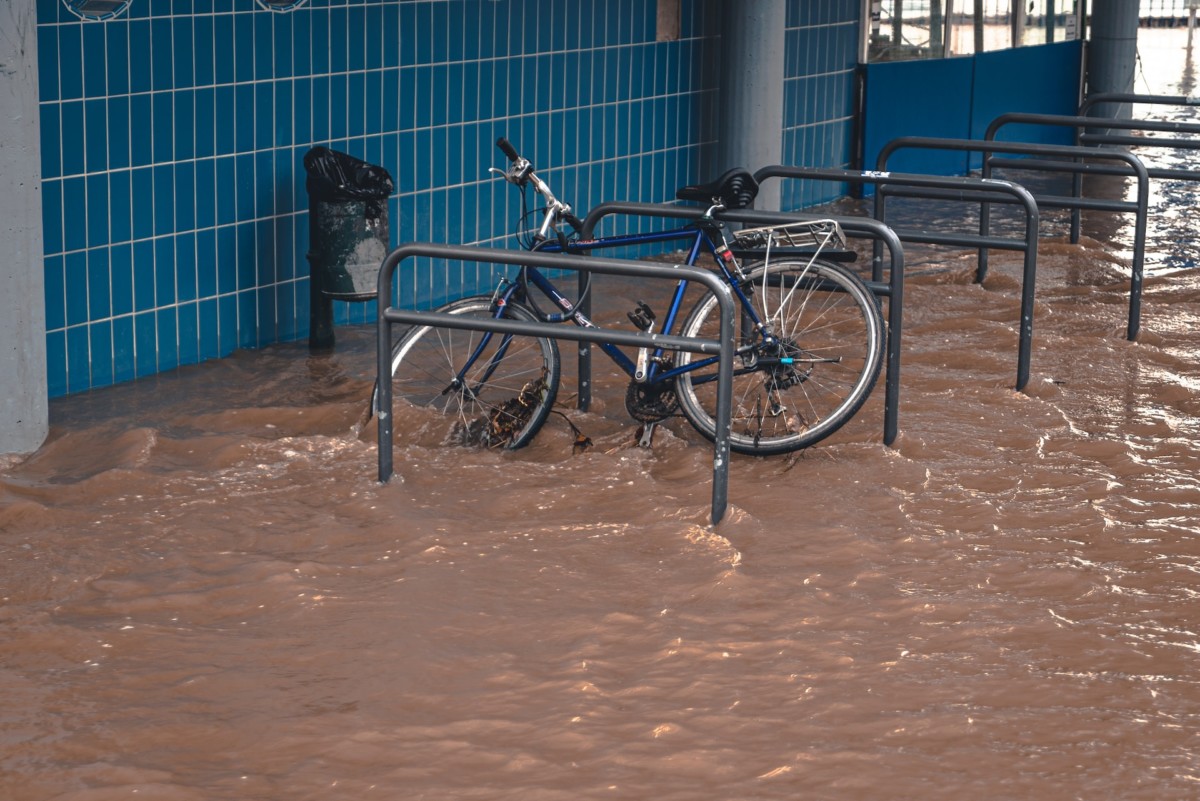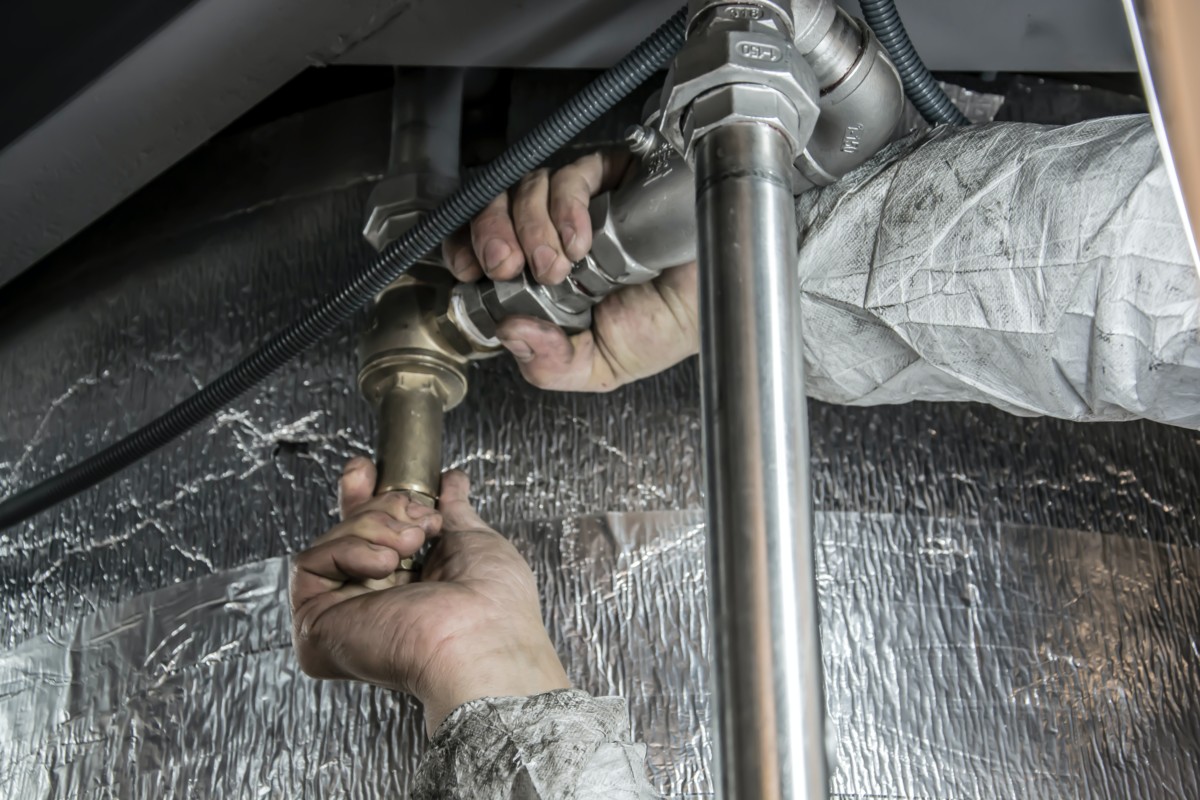If you live somewhere that experience severe storms, you may be at risk of a flooded apartment, especially on ground-floor levels. Flooding is the most expensive natural disaster, and not only does it cause damage to personal items, but it can also ruin the structure of your apartment building. Flooded apartments can also be caused by burst pipes, your neighbors, or the building itself. It’s essential to be prepared and act fast in these situations to help preserve your personal property. From information about renters insurance and steps to take, we’ve got you covered.
So whether you’re renting an apartment in Cape Coral, FL, moving into an apartment in New Orleans, LA, or finding yourself in a flood-risk area, read on to learn more about flooding and your apartment.

What can cause a flooded apartment?
Many different factors cause floods. It may be due to heavy rainfall over several days, overflowing bodies of water, hurricanes, thawing snow, severe storms, burst pipes, or a faulty roof. States that are the most vulnerable to substantial flooding include Florida, Texas, Louisiana, and California. Flooding is becoming more likely in other areas around the U.S. because of climate change and can be detrimental to your home and community. We encourage you to stay updated with your location and its risks and know if your house is in a flood zone.
9 steps to take if your apartment floods
Acting quickly to limit the amount of flood damage to your property is essential. We’ve created ten steps to help you prepare and stay calm during a flood.
1. Determine the source of flooding
As soon as you notice water seeping into your apartment, you’ll need to identify where it’s coming from. Whether it’s from the outside of your apartment coming through the doors or windows, coming down the walls from your upstairs neighbors, or you notice your sink or toilets are overflowing, you’ll need to find a way to limit the amount of water coming in.
If your flooded apartment results from a natural disaster, retrieve essential personal items and follow safety protocols in your area. If the flood results from a burst pipe or your neighbors, locate the shut-off valve to stop the water. The valve can be found under sinks or by your water heater. The best thing to do in these situations is to try and shut off the water while waiting for help to arrive.

2. Call your landlord or property management company
When apartment flooding results from your apartment complex, you’ll need to notify your landlord or property manager as quickly as possible. Inform them of the situation and be as descriptive as you can. They will work with their maintenance teams or hire a plumber to assist with the problem. If your landlord or property management does not answer your calls, emails, or texts, you may have to take matters into your own hands since it’s a timely ordeal. If that is the case, keep all receipts of any work a third party has done so you can provide them to your landlord.
3. Document any flood damage
While you’re waiting for your maintenance to assist with your apartment flooding, and it’s safe to remain in your unit, now is the time to document any damage the apartment flood may have caused. Take notes and photos of everything that may have been damaged. This will help you when dealing with insurance and will help accelerate the claim from the landlord to their insurance company.
4. Secure your belongings and notify your neighbors
Once you document the flood damage, try to secure your belongings and let your neighbors know of the situation. Whether moving items off the floor or securing your electronics, it’s best to keep your important documents safe and out of the water. Once you secure your belongings, notify your neighbors of the flood so they can secure their belongings if flooding begins in their unit.
5. File a claim to your insurance
While some renter’s insurance won’t cover every cause of a flood, it’s always a good idea to see if your belongings are protected. Most policies do not cover floods caused by natural disasters, but water damage caused by internal structure faults does. This is where your documentation will come in handy. The quickest way to file a claim is to contact your insurance directly through customer support. Your landlord will go through the same process for their building and may ask to use the photos you captured.

6. Make a repair plan with your landlord
After the initial shock of the disaster, it’s vital to remain in contact with your landlord until the situation is resolved. Ask them about repairs, timelines, and schedules to know what to expect.
7. Review your local laws
In worst-case scenarios, you may need to temporarily leave your apartment during repairs. In some instances, landlords aren’t obligated to find you housing, especially if the flood was due to a natural disaster. That said, if the flood made the apartment uninhabitable, you shouldn’t have to pay rent until the unit is repaired. Your local tenant laws will determine the exact requirements. You’ll want to keep detailed records on everything since the flood to protect yourself and your apartment. Stay up-to-date with your local renter laws and see where you stand if a flood happens in your area.
8. Opt for professional cleaners
Water damage is serious and should be cleaned appropriately. When the repairs are finished, and all that’s left is a mess, you’ll either have to clean it up yourself or your landlord will hire a cleaning crew – depending on who was at fault. Water damage left untreated can worsen the effect of the flood, like mold in your apartment, which can cause serious health issues, so it’s important to stay on top of cleaning.

9. Make a plan for the next time a flood occurs
After experiencing your first flooded apartment, you probably want to do everything you can to ensure it doesn’t happen again. Planning can help you limit your losses. Make sure you know where the emergency shut-off valve is and that you check the toilet, kitchen, and washer/dryer pipes are working correctly so no leaks occur. You’ll also want renters insurance that includes a flood policy under the National Flood Insurance Program.
FAQs about apartment floods
How do you get rid of water in a flooded apartment?
To get water out of flooded apartments, you’ll need a water pump to clear the standing water and a wet/dry vacuum to mop up the rest. You’ll also want to purchase or rent a dehumidifier to reduce the humidity and moisture within the walls and floors.
How long does a landlord have to fix the flood damage?
For critical repairs, the landlord has around 3-7 days to fix damages, and 30 days to fix non-critical repairs. Learn more about how long a landlord has to fix something, so you can know what to expect from them.
The bottom line about apartment floods
No matter what the cause of your flooded apartment is, planning ahead can ease the stress you’ll endure. From understanding the terms of your lease and picking the right renter’s insurance policy to knowing if you’re in a flood-prone area and what to do if your apartment floods, you’ll want to be prepared. Remain calm, act fast, and remember to document everything for your landlord.
The post Taking Care of a Flooded Apartment in 9 Steps appeared first on Redfin | Real Estate Tips for Home Buying, Selling & More.
